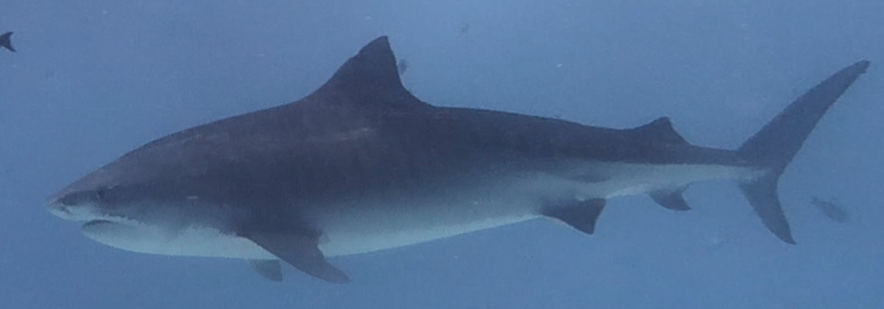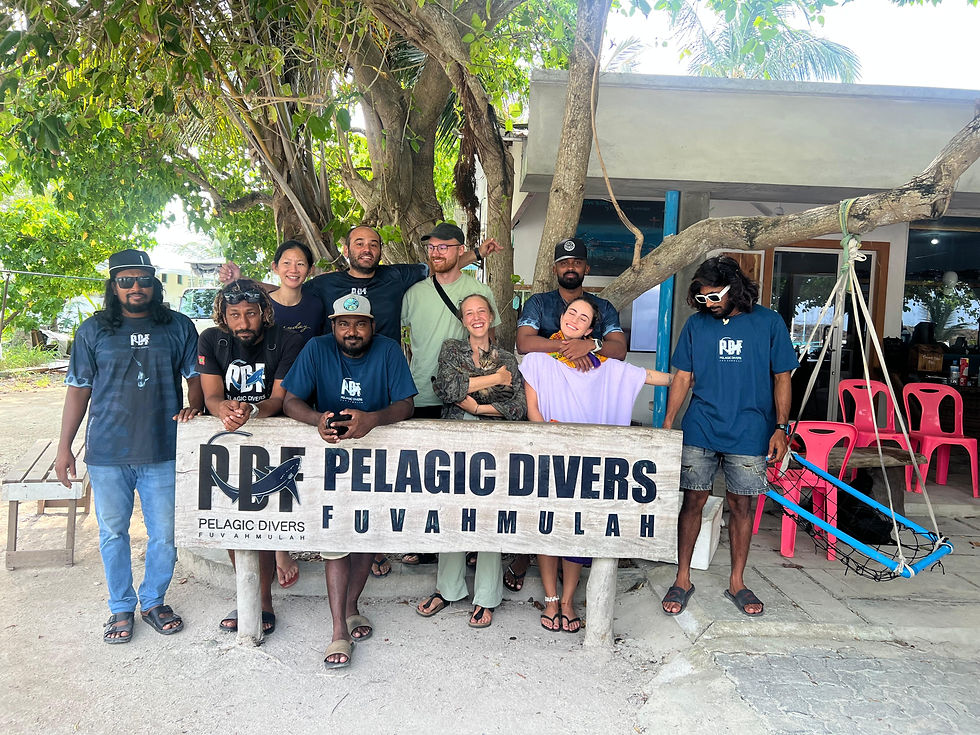Forschung/Science: ID, EOTRs & ImageJ
- piaho99
- 22. Juli
- 2 Min. Lesezeit

Ein Großteil meiner Aufgaben hier dreht sich um die Foto-Identifikation von Tigerhaien. Das bedeutet: Kamera mitnehmen, filmen, und später in stundenlanger Detektivarbeit Screenshots ziehen, einzelne Tiere mit Namen und ID Nummer bestimmen und alle möglichen Infos dazu notieren. Dazu gehört nicht nur, wer genau auftaucht, sondern auch alles zum Wetter, Wellen, Strömung, Mondphase... Auch generelles zum Tauchgang wie Tiefe und Dauer, wie viele Gäste und Guides und die Anzahl der Boote an dem Tauchspot (Tiger Harbour). Sehr wichtig: Wann taucht der erste Tigerhai auf, wann wurde der erste Thunfischkopf geworfen, wie viele insgesamt? Welcher Hai war zuerst in der Feeding Area? Und auch: wie viele Silberspitzenhaie (Carcharhinus albimarginatus) waren da?
A big part of my work here revolves around photo identification of tiger sharks. That means: taking a camera underwater, filming, and then spending hours playing detective, taking screenshots, identifying individual sharks by name and ID number, and recording as much information as possible. It’s not just about who shows up, but also all the surrounding conditions: weather, wave height, currents, moon phase... I also note down general dive data like depth and duration, how many guests and guides were in the water, and how many boats were at the dive site (Tiger Harbour). Very important details include: When does the first tiger shark appear? When is the first tuna head thrown in, and how many are used in total? Which shark arrives first in the feeding Area? And also: how many silvertip sharks (Carcharhinus albimarginatus) were there?
Ein anderes spannendes Projekt hier ist die Studie zu Fuchshaien (Alopias pelagicus). Dafür werden sogenannte EOTRs (Eye on the Reef Kameras) an Putzerstationen platziert. In der anschließenden Videoanalyse schaue ich: Wie lange ist der Fuchshai im Bild? Welcher Putzerfisch ist aktiv (wenn einer da ist)? Wo wird der Hai geputzt? Senkt er die Schwanzflosse herunter? Schwimmt er einfach nur durch oder dreht er Kreise?
Ein weiteres Projekt beschäftigt sich mit der Heilung von Wunden bei Tigerhaien. Dabei wird das Programm ImageJ verwendet, ein Tool, das ich sogar aus der Uni kenne! Hier werden die Wunden auf Fotos umrandet und dann mit späteren Aufnahmen verglichen, um die Heilungsdauer zu analysieren. Und das ist wirklich beeindruckend: Viele Verletzungen verheilen extrem schnell. Selbst Haie mit aufgerissenem oder gebrochenem Kiefer wirken trotzdem fit.
Another exciting project involves the study of thresher sharks (Alopias pelagicus). For this, so-called EOTRs (Eye on the Reef cameras) are placed at cleaning stations. In the video analysis afterward, I look at things like: How long is the thresher shark in frame? Are cleaner fish present and active? Where is the shark being cleaned? Does it lower its caudal fin? Is it just passing through, or does it circle the station?
A third project focuses on injury healing in tiger sharks. For this, we use a program called ImageJ, a tool I actually came across during university! Wounds are outlined on photographs and compared with images taken over days or weeks to assess how quickly they heal. And the results are seriously impressive: many injuries heal incredibly fast. Even sharks with torn or broken jaws often appear in perfectly healthy conditions and active.









Kommentare